Grow Mexican Sunflower in Pollinator Gardens
Updated: Mar. 06, 2024
Easy-to grow Mexican sunflower is a pollinator champion. Boost your mood and support bees, butterflies and hummingbirds with colorful blooms.
On This Page
Why You Should Grow Mexican Sunflower
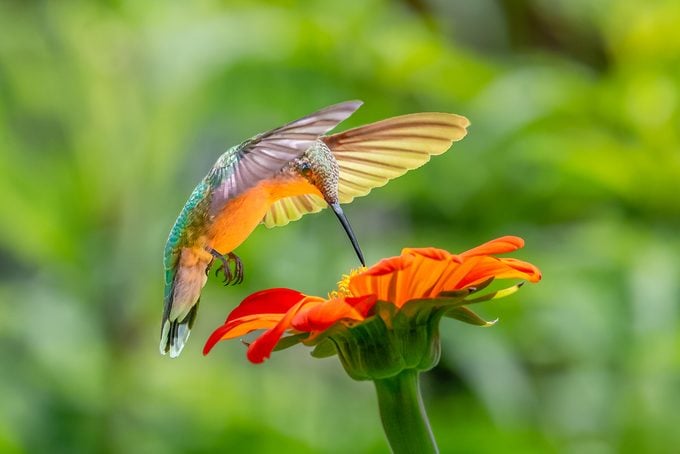
Bright and vibrant, a Mexican sunflower spices up gardens both with their colorful blooms and through the wildlife they attract.
“Mexican sunflowers are loved as a pollinator favorite, supporting butterflies, hummingbirds and a host of beneficial bugs,” says Tabar Gifford, a master gardener with American Meadows. “They are a low-maintenance choice, great for new gardeners, plus deer and other hungry critters tend to leave them alone.”
The blooms of Mexican sunflowers range from red and orange to yellow, with fuzzy stalks that branch out in a big, gangly bunch. They resemble native prairie sunflowers and zinnia more than common sunflowers. Native to Central America and Mexico, they are hearty in arid regions, plus grow quickly into full, lush landscapes with an abundance of flower heads.
“That makes them a nectar buffet for swallowtails, monarchs and other butterflies,” says Keri Wilson, a horticulturist with Garden Media Group. “Tithonia also thrives in heat, blooming even when other flowers start to wilt and fade, making it an excellent late-season food source for migrating butterflies.”
Mexican Sunflower Care and Growing Tips
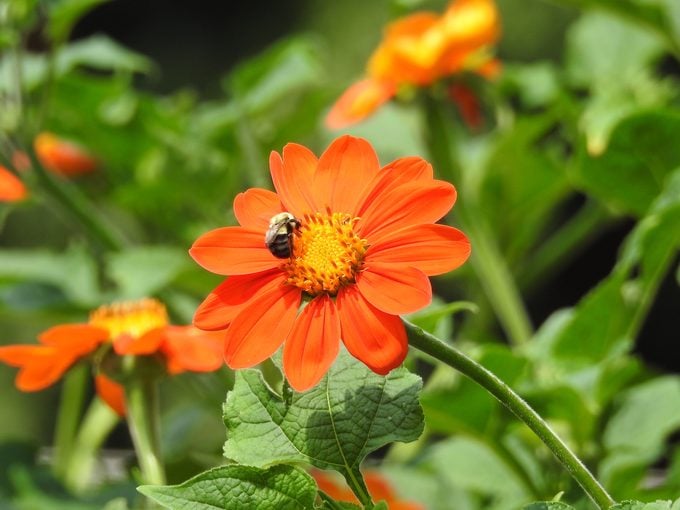
- Scientific name: Tithonia rotundifolia
- Common names: Mexican sunflower, tree marigold, Mexican tournesol, Japanese sunflower, Nitobe chrysanthemum, red sunflower
- Zones: annual in zones 2 to 11, perennial in zones 9 to 11
- Light needs: full sun
- Water needs: drought-tolerant
- Soil: well-drained, poor to average
- Size: 4 to 6 feet tall
- Attracts: bees, butterflies, hummingbirds
Plant Mexican sunflowers in the spring, after the last frost. Good locations include the back of borders or vegetable garden edges to attract pollinators. Start seeds indoors or sow directly on top of the ground, covered with a shallow amount of soil or seed starting mix. Expect germination in about 10 days.
People typically grow Mexican sunflowers in the ground. They will also work in large, stable containers with good drainage, like a half-whiskey-barrel style planter.
“Containers made from natural materials are preferable due to their porous nature, which closely emulates their desired environment,” says Laura Root, a horticulturist with Park Seed.
Deadhead spent blooms to encourage new buds. Once the season is over, harvest seeds for next year’s planting, but leave some stalks standing over winter for the birds.
Mexican Sunflower Varieties
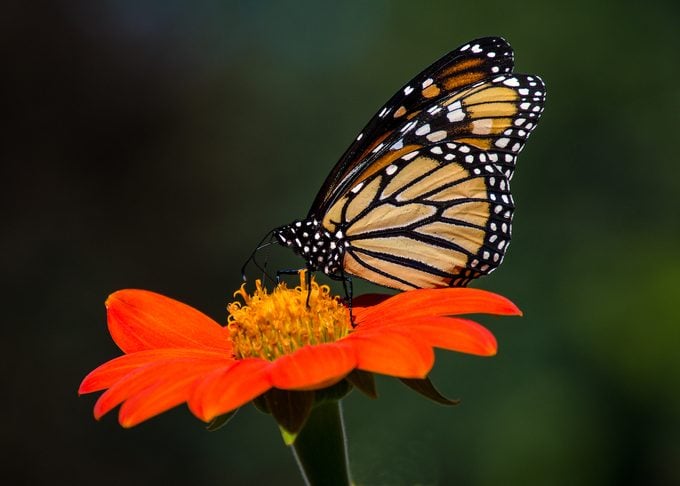
Popular cultivars of Mexican sunflowers include:
- Torch: rusty-red flowers, particularly adored by monarchs
- Goldfinger: shrubby with red-orange blooms
- Fiesta del Sol: a dwarf with prolific, fast-emerging blooms
Pitfalls of Growing of Mexican Sunflowers
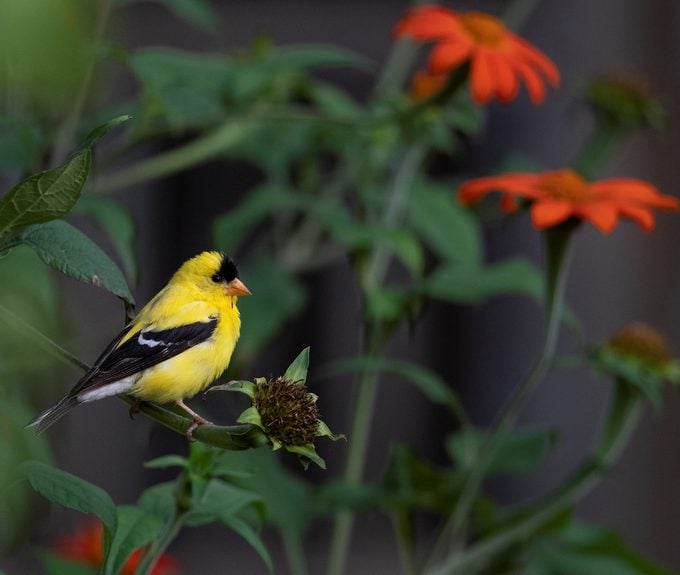
Mexican sunflowers are generally pest-resistant and low-maintenance, with few growing challenges. But there are a couple of problems to watch out for:
- They may require staking, especially in windy areas. “In addition, they are often broken by curious and hungry birds,” says Laura.
- Overcrowding can create poor air circulation
- Boggy soil can lead to root rot
- If they don’t get enough sunlight, they can get lanky or scraggly
- Under the right conditions, they can reseed prolifically
“While this can benefit gardeners who enjoy a naturalized look, monitoring their spread to prevent potential invasiveness in certain regions is essential,” says Laura. “The more you cut for bouquets, the less seeding will occur, keeping the plant very manageable.”
Mexican Sunflowers Vs. Common Sunflowers
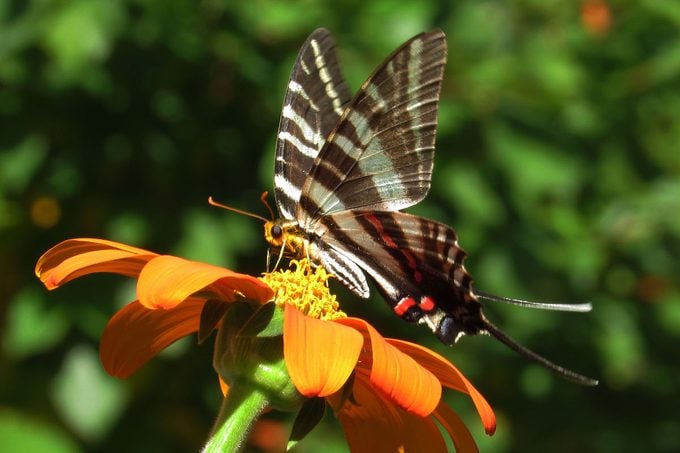
The most pronounced differences are that Mexican sunflowers have smaller, red-orange daisy-like flowers and typically grow faster than common sunflowers (Helianthus annuus). Common sunflower seeds are also larger and less bitter, which means they tend to be a better bet for attracting a greater diversity of birds. Nectar-rich Mexican sunflowers are particularly delightful for pollinators.
“Both love similar growing conditions and are a cheerful, easy-to-grow addition to your garden,” says Tabar. “Tithonia is a better choice for areas where you want some height, but not so tall they block the view.”
About the Experts
Tabar Gifford is a master gardener and sustainable community development advocate with American Meadows seed company.
Laura Root is a horticulturist and avid educator with Park Seed seed company.
Keri Wilson is a horticulturist who writes about plants and plant issues for Garden Media Group.
Sources
University of Wisconsin-Madison Division of Extension
Why Trust Us
For nearly 30 years, Birds & Blooms, a Trusted Media Brand, has been inspiring readers to have a lifelong love of birding, gardening and nature. We are the #1 bird and garden magazine in North America and a trusted online resource for over 15 million outdoor enthusiasts annually. Our library of thousands of informative articles and how-tos has been written by trusted journalists and fact-checked by bird and garden experts for accuracy. In addition to our staff of experienced gardeners and bird-watchers, we hire individuals who have years of education and hands-on experience with birding, bird feeding, gardening, butterflies, bugs and more. Learn more about Birds & Blooms, our field editor program, and our submission guidelines.



















